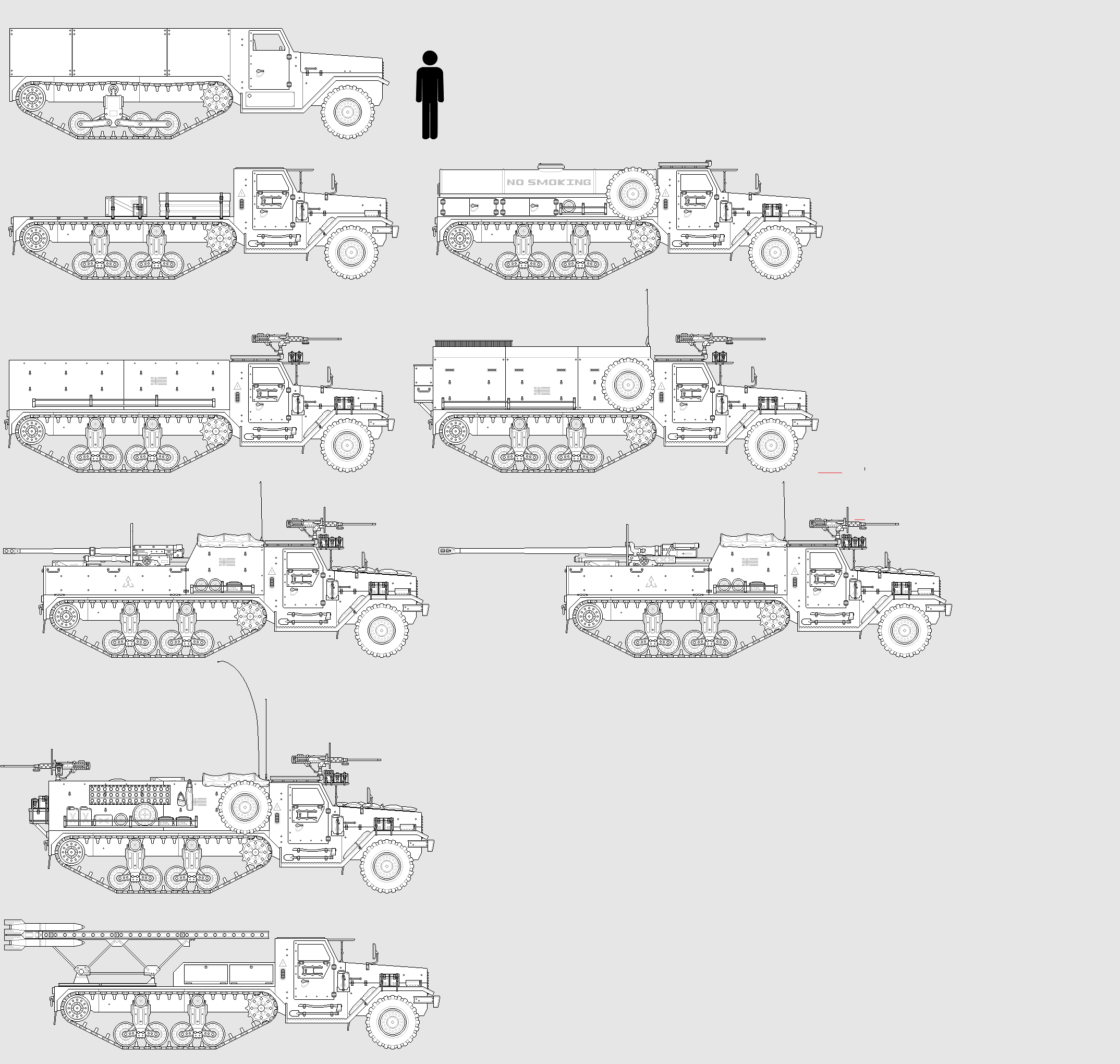Rich and Corporations wrote:Question time. The Soviets used a high technology tank and an incremental upgrade tank of nearly equal weight throughout the Cold War.
The United States practiced incremental upgrades during the early Cold War, and then switched to designing from the bottom up during the late Cold War.
In NS, everyone seems to practice bottom-up revolutionary designing, except Questers.
Given NS circumstances, should one adopt a high technology medium tank and a high technology heavy tank? Or a higher technology heavy tank? Or a high technology medium tank and a standard technology medium tank? Or only use heavy tanks?
Here's what I plan to do:
Tanks - 3 tiered system, all are HV, all use ETC, they are basically different flavors of MBT.
105mm - Can be used for infantry support that warrants an MBT as opposed to a light tank/tank destroyer/recon gun vehicle . If you want an infantry support MBT then this is it. Or if the other two tiers are too heavy or logistics-intensive for the application. Smaller caliber = more rounds. Should be ideally somewhere in the 50T range +- ~10T. If used in an anti-armor role they can make use of the following assortment of weapons, in ascending order of tankrapeness: HEAT, APFSDS (hopefully it can [at least somewhat] compensate for the small caliber by very high velocities, seeing how its' fired out of an ETC gun), and finally top-attack GLATGM.
Basically, quality and tech-wise it is the same as the heavier tanks, only using a smaller caliber and being lighter as a result.
125mm - To be used as a general-purpose, anti-armor and infantry support MBT. This most closely fits the definition of an MBT. Ideally somewhere in the ~75 T range.
145mm - More anti-armor oriented, although it's still a heavy tank and fires one piece ammo, it tends more towards tank killer/SPG territory. Hopefully weight will be <=100T . Dat ETC gun tho.
"Mobile Gun Systems" / Light Tanks - yet again a 3 tiered system, all are HV but non-ETC. Their ammo can be fired out of the ETC guns of the above tanks.
105mm - based around a 6x6 chassis
125mm - based around a 8x8 chassis
145mm - based around a 10x10 chassis
A formation based around the 6x6 chassis will use the 105mm armed vehicle, for example. They are to function as infantry support vehicles, light tanks, recon gun vehicles, etc. Weights are in the ~ 15 - 35 T range, or something along those lines. Basic point is, they're lighter than the tanks, they use the same caliber, but they don't use ETC and aren't armored to the same level.
Anything above 145mm (165mm 185mm 205mm) isn't one-piece (because MRSI) and is effectively considered artillery. These guns are used for casemate SPHs ; apart from general purpose rounds, they can use dedicated anti-armor, point target or AOE munitions either in direct or indirect fire.
Using ETC for such large calibers would probably mean I have to design even heavier purpose-built platforms to withstand the tremendous recoil, so I think I'm not gonna use ETC and instead use the tank platforms as a base.


